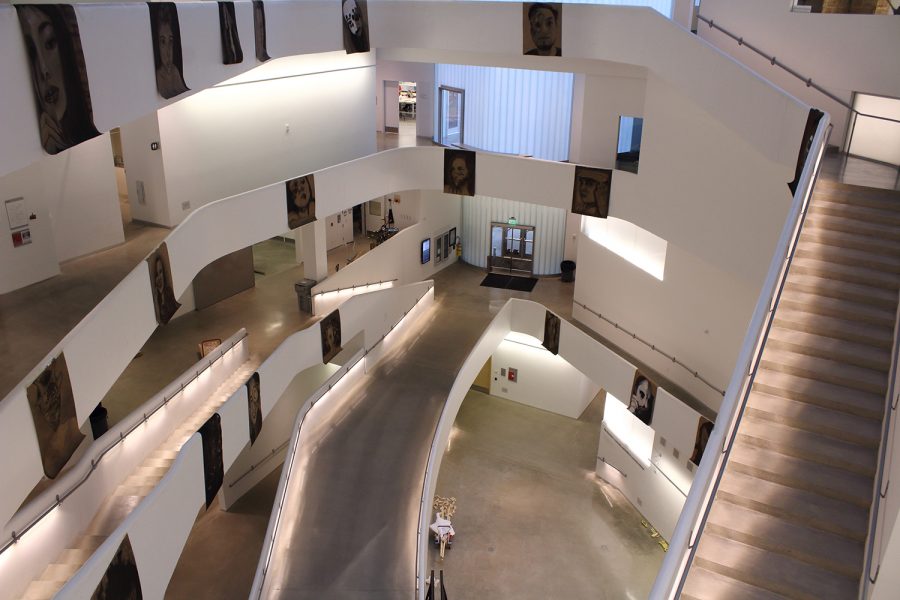UI art students use new technology to turn their thoughts into reality
The University of Iowa School of Art and Art History trains students to use CNC to design objects.
The interior of the Visual Arts Building on the west side of campus as seen on Tuesday, Oct. 10, 2017.
December 13, 2018
The University of Iowa School of Art & Art History trains students to use new technology to bring their thoughts to reality.
Computerized numerical cutting is a process by which a computer commands a machine using plasma or a laser arc to design an object, said Steve McGuire, the director of the School of Art & Art History. The drawing could be on drawing software such as AutoCAD.
“We [are] particularly well-equipped in that we have a suite of equipment dedicated to the use of these process for the creation of artwork,” he said.
RELATED: The art and heart behind graphic design
McGuire said students do not have to pay money in order to use the equipment.
“We purchased the equipment using instructional technology funds and also student computer technology funds,” he said.
The Art School offers classes in which students create 3D printers, he said.
The computerized numerical cutting equipment housed in the Art School is unique because only a handful of art programs in the country offer students this type of practical training.
“What we have here is something that [can also] appear in the college of engineering,” McGuire said.
RELATED: UI collection of art graduate pieces finds a new physical and digital home
Billy Cho , who manages the computerized numerical cutting suite and helps students operate different equipment, applauds the technical approach.
“You can get a hand-held plasma cutter, but what we do here is all controlled by a computer, so it comes with a different software, in cutting,” he said. “It depends on what type of material — plasma cutter, aluminium, copper, etc.”
Cho said students equipped with this type of training have an advantage because their designs are more precise. Students can show these designs while seeking jobs.
“All students who are taking art and art history classes can use the material available in the computerized numerical cutting suite,” he said.
Students can also work on their personal project using these machines, he said. Typically, there about 200 students every semester who use computerized numerical cutting devices.
“Most people think about computerized numerical cutting machines and think that they take a long time,” he said. “These really take that long.”
Students gain training and learn to use the device, he said. This skill is important as it helps them in the real world after their graduation.
“For our program here, we don’t only give them the idea of how to work with these machines, but we actually have students learn fabrications, and help them work from start to end,” he said.
The computerized numerical cutting can cut glass, acrylic, wood, and many industrial plastics.
Colin Flynn, a UI senior studying engineering, said he was first introduced to computerized numerical cutting when he was in a woodworking class.
“Billy was in that class, and he told me about it and that they were opening a new lab for all the computerized numerical cutting equipment,” he said. “After talking to Steve McGuire, I got into [his class], and from there Billy realized the skills I had in the engineering building and offered me a job to work as a student monitor.”
The computerized numerical cutting devices allow students to turn their thoughts into tangible objects, he said.
“A lot of things aren’t possible by just free handing something with a saw or a drill, but having the ability to draw out a sketch, lay it on a computer, and then veld it into a 3D object,” he said.















